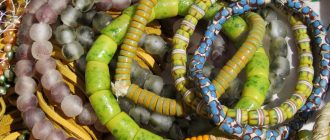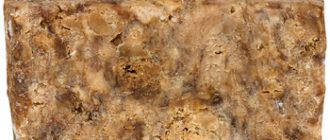In addition to its beautiful coastline, friendly people and warm weather, amazing traditional Ghanaian art is another attraction that draws tourists to the small West African nation. Traditional artworks in Ghana have always had meaning that can be traced back to the origin of the item. Below is a look at various types of traditional art in Ghana.
Coffins
Fantasy coffins are one of the key art forms that have placed Ghana firmly one the art world map. The fantasy coffin workshops are located in the villages of Teshie and Nungua which are situated side by side, approximately half an hours’ drive from Accra. The coffins produced here take on the shape of fish, airplanes, birds and even beer bottles, with the most popular shape being a white Mercedes Benz. Fairly expensive by most standards, only the individuals who can afford the coffins will get buried in them.
The image of the coffin is designed to reflect its relationship with the life of the recipient. For instance, a fisherman may be buried in a tuna or a farmer in an onion. Forever innovative, the Ghanaian carpenters are today crafting miniature shapes that tourists can fit into suitcases and take back home. Fantasy coffins are a relatively new folk art that began in 1960 in one of the carpentry workshops in the region. There are several workshops today which are all located within a couple of miles of each other.
Gold
Traditional gold work in Ghana has a rich history dating back to centuries and chronicling the history of the Akan goldsmiths and the gold mines of West Africa. The gold work technology involved goldsmiths hammering out large objects such as earrings from a single piece of solid gold for women to wear. Beeswax workers were also involved in the creation of intricate swirls of uniform beeswax wire for lost wax casting.
The quality of the traditional casting of gold in Ghana would surprise those who assume that high technology is the only means by which to cast fine detail. In fact, the filigree work rivals the best in the world, with wire soldering and fine granulation that produces patterned surfaces that are incredibly complex.
Gold necklaces are created from finely detailed gold beads in simple shapes such as circles and rectangles which are threaded through textured wires of gold. There is also the gold leaf work that involves the application of gold foil onto carved wooden objects such as fly whisk handles and speakers staffs.
Tribal
If you are looking for traditional tribal art in Ghana, the Ashanti region would be the best place to go. The Ashanti are members of the Akan peoples and comprise the largest ethnic group in Ghana. Famous for their reputation as fierce fighters who resisted the invasion of the British for many years, the Ashanti are also famous for their traditional arts and crafts.
Kumasi, the capital of the Ashanti region, as well as the surrounding craft villages are home to the largest concentration of indigenous crafts. This is mainly because the king of the Ashanti and his entourage are patrons. In fact, when the king appears in a state ceremony known as a durbar, he needs someone to walk beside him, while supporting his arm which is weighed down with gold. For the Akan, creativity is regarded as being divine and craftsmen are known as borebore which means “god”. The workmanship produced from gold sourced from the Obuasi gold mine is nothing short of exquisite.
Known as the Gold Coast during British occupation, Ghana was said to have gold dust flowing into the street when it rained. Kumasi is Ghana’s second largest city and its Central Market is the largest outdoor market in West Africa. A number of craft villages are located near Kumasi. These were established centuries back originally to provide the King and his court with regalia. Today, anyone who can afford them can purchase crafts from these villages.
Ghana Empire art
Kente is one of the most notable forms of Ghana empire art. King Opoku Ware is remembered for buying silk taffeta and materials of various colors. The weavers would then unravel them to obtain large quantities of silk threads which they mixed with cotton to create beautiful kente cloth.
Gold, silver and brass were other mediums through which authentic visual art in Ghana found expression. Ghana is recognized for its expertise in lost wax casting of these metals. For 500 years, Portuguese, English and Dutch merchants traded brass wares for gold and slaves. Local smiths would then melt the brass to produce treasure vessels.
Ghanaian wood works are yet another interesting facet of the country’s traditional art. The diverse forms of tropical wood found in Ghana have been exploited for the production of furniture both for building and for the making of stools, drums and linguist staffs. These wood works depict figures or images that communicate philosophical or totemic didactic ideas.
During the Ghana Empire, various Akan societies would commission skilled female artists to manufacture terra cotta or baked clay personal portrait sculptures referred to as Nsodia and Abusua kuruwa. Such portraits would be used during the funerary ceremonies of the important personalities after they had passed away.
The Akunitan cloth for bravery was yet another notable feature of traditional Ghana empire art. During the 15th century, this broad felt fabric was woven with embroidered, quilted or appliquéd figurative and abstract motifs, all of which were of symbolic significance. Most would tell of wealth, prestige and power, as well as successful military campaigns.
Although a small country the indigenous art and crafts of Ghana are collected the world over. Traditional artworks include sculptured stools, gold ornamented swords, linguists’ staffs, and the hierarchy of double and single royal umbrellas, ivory horns, carved drums and much more. In fact, there are many festivals and activities that are held in celebration of the rich heritage and culture of Ghana. If you have a strong interest in traditional African art and culture, then Ghana is just the country to visit.





